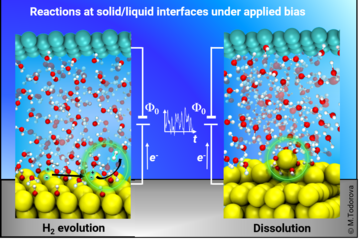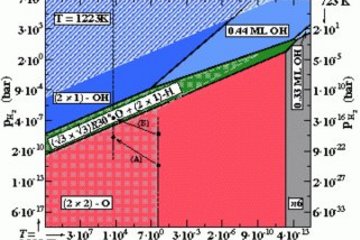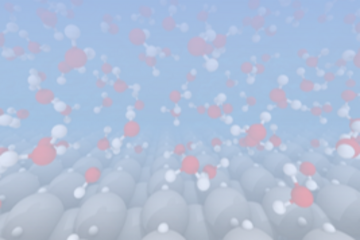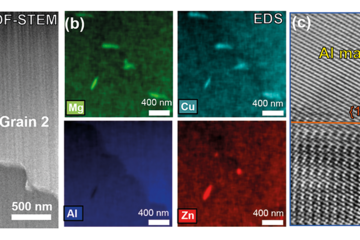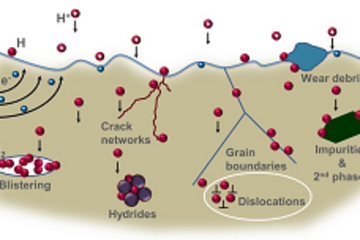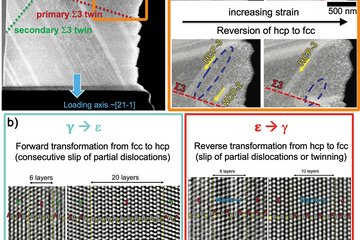All genres
501.
Poster
Study of substructure and texture development in dual phase steels due to thermo-mechanical treatment. ITAP3, 3d International Conference on Texture and Anisotropy in Polycrystals, Göttingen, Germany (2009)
502.
Poster
Bending of Single Crystal Copper Micro Cantilever Beams with Cube Orientation: Finite Element Simulation and Experiments. MRS Fall Meeting 2009, Boston, MA, USA (2009)
503.
Poster
Size Dependence of Mechanical Strength Observed During Bending of Beams with Rectangular and Circular Cross Sections. MRS Fall Meeting 2009 , Boston, MA, USA (2009)
504.
Poster
Effects of initial orientation, sample geometry and friction on anisotropy and crystallographic orientation changes in single crystal microcompression deformation: A crystal plasticity finite element study. International workshop on small scale plasticity, Brauwald, Switzerland (2007)
505.
Poster
Micro-mechanical modeling of near-gamma Ti-Al-Nb. 11th World Conference on Titanium (JIMIC5) Ti-2007, Kyoto, Japan (2007)
506.
Poster
A Slip Interaction Based measure of Damage Nucleation in Grain boundaries. MMM Third International Conference Multiscale Materials Modeling, Freiburg, Germany (2006)
507.
Poster
Slip Interactions Leading to Damage Nucleation in TiAl Grain Boundaries. 3rd International Workshop on - TiAl Technologies, Bamberg, Germany (2006)
508.
Poster
3D experimental investigation and crystal plasticity FEM simulation of the texture and microstructure below a nanoindent in a Cu-single crystal. 6th European Symposium on nano-mechanical Testing (Nanomech 6), Hückelhoven, Germany (2005)
509.
Poster
Development of a Grain Fragmentation Criterion and its Validation using Crystal Plasticity FEM Simulations. Meeting, Düsseldorf, Germany (2004)
510.
Teaching
Prozess- und Werkstoffsimulation. Lecture: WS 2023/2024, RWTH Aachen University, 2023-10 - 2024-03
511.
Teaching
Prozess- und Werkstoffsimulation. Lecture: WS 2022/2023, RWTH Aachen University, 2022-10 - 2023-03
512.
Teaching
Prozess- und Werkstoffsimulation. Lecture: WS 2021/2022, RWTH Aachen University, 2021-10 - 2022-03
513.
Teaching
Prozess- und Werkstoffsimulation. Lecture: WS 2020/2021, RWTH Aachen University, 2020-10 - 2021-03
514.
Teaching
Prozess- und Werkstoffsimulation. Lecture: WS 2019/2020, RWTH Aachen University, 2019-10 - 2020-03
515.
Teaching
Prozess- und Werkstoffsimulation. Lecture: WS 2018/2019, RWTH Aachen University, 2018-10 - 2019-03
516.
Teaching
Prozeß- und Werkstoffsimulation. Lecture: Lecture WS 2017/2018, RWTH Aachen, Germany, 2017 - 2018
517.
Teaching
ICME for Steels. Lecture: Lecture SS 2017, RWTH Aachen, Aachen, Germany, 2017
518.
Teaching
Prozeß- und Werkstoffsimulation. Lecture: Lecture WS 2016/2017, RWTH Aachen, Germany, 2016 - 2017
519.
Teaching
Prozeß- und Werkstoffsimulation. Lecture: Lecture WS 2015/2016, RWTH Aachen, Germany, 2015 - 2016
520.
Teaching
ICME for Steels. Lecture: Lecture WS 2015/2016, RWTH Aachen, Aachen, Germany, 2015 - 2016




